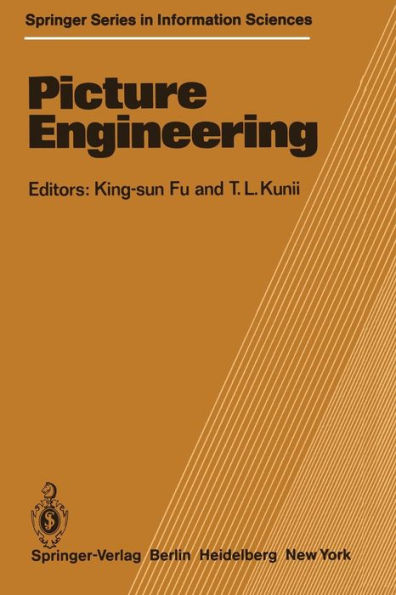Picture Engineering
This book seeks to elucidate picture engineering as a new discipline for hand- ling the entire scope of picture processing in a systematic manner. Picture engineering as a discipline has three aspects, the first of which is methodo- logical, technical, and architectural. The second consists of pattern ana- lysis and recognition of pictorial input, picture database management, inclu- ding picture data structure and data representation for picture storage and transformation, and computer graphics for picture output and display. Ver- satile applications such as computer-aided design, manufacturing and testing (CAD/CAM/CAT), office automation (GA), robotics, and fancy computer arts com- prise the third aspect. This book covers all three aspects in original papers by leading experts in the discipline. The book is divided into six parts. Part I covers the central topic of pictorial database management in three papers. The first, by Yamaguchi and Kunii, presents a data model for designing a picture database computer. The second, by Klinger, discusses the organization of computers for handling pic- torial data. In the third paper, Shi-Kuo Chang treats the indexing and enco- ding of pictorial data. Part II is devoted to picture representation. First, a general approach to picture analysis using both syntactic (structural) and semantic information is described by Fu. This is followed by an in-depth explanation of various 3-D shape representation methods by Ikebe and Miyamoto. Schumaker elaborates polar spline representation of 3-D objects, and finally, Enomoto, Yonezaki and Watanabe describe a unique method of characterizing 3-D surfaces by struc- ture lines.
"1000913388"
Picture Engineering
This book seeks to elucidate picture engineering as a new discipline for hand- ling the entire scope of picture processing in a systematic manner. Picture engineering as a discipline has three aspects, the first of which is methodo- logical, technical, and architectural. The second consists of pattern ana- lysis and recognition of pictorial input, picture database management, inclu- ding picture data structure and data representation for picture storage and transformation, and computer graphics for picture output and display. Ver- satile applications such as computer-aided design, manufacturing and testing (CAD/CAM/CAT), office automation (GA), robotics, and fancy computer arts com- prise the third aspect. This book covers all three aspects in original papers by leading experts in the discipline. The book is divided into six parts. Part I covers the central topic of pictorial database management in three papers. The first, by Yamaguchi and Kunii, presents a data model for designing a picture database computer. The second, by Klinger, discusses the organization of computers for handling pic- torial data. In the third paper, Shi-Kuo Chang treats the indexing and enco- ding of pictorial data. Part II is devoted to picture representation. First, a general approach to picture analysis using both syntactic (structural) and semantic information is described by Fu. This is followed by an in-depth explanation of various 3-D shape representation methods by Ikebe and Miyamoto. Schumaker elaborates polar spline representation of 3-D objects, and finally, Enomoto, Yonezaki and Watanabe describe a unique method of characterizing 3-D surfaces by struc- ture lines.
109.99
In Stock
5
1

Picture Engineering
306
Picture Engineering
306Paperback(Softcover reprint of the original 1st ed. 1982)
$109.99
109.99
In Stock

Product Details
| ISBN-13: | 9783642878695 |
|---|---|
| Publisher: | Springer Berlin Heidelberg |
| Publication date: | 05/21/2012 |
| Series: | Springer Series in Information Sciences , #6 |
| Edition description: | Softcover reprint of the original 1st ed. 1982 |
| Pages: | 306 |
| Product dimensions: | 5.98(w) x 9.02(h) x 0.03(d) |
From the B&N Reads Blog
